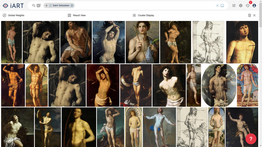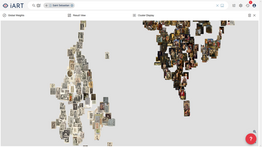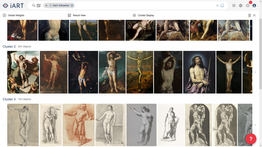About the project
Within the project “iART”, an e-research tool is being developed for the utilisation and evaluation of image data in humanities-related research processes. The aim of “iART” is to optimise research in electronic image databases and thus increase the performance of existing scientific information systems.
Art-historical techniques of analysis are essentially based on comparative processes, e. g., in determining the history of style. The basis of comparison is the determination of a measure of similarity, which can be based on content or formal criteria. In the history of form, criteria such as spatiality, diversity, or representational precision establish the affiliation to a certain stylistic epoch. The differently developed phenomenological patterns of design group works from the same epoch into groups that can be diverse in themselves, but are sufficiently different from others. In art studies, there thus is a scientific interest in determining a set of art works that are similar according to definable criteria, to base a more in-depth analysis and interpretation on them.
The aim of the project is to develop a tool to support search in electronic image databases and automated (similarity-based) analysis of large image corpora, based on machine learning (ML) methods and concepts of statistics and data analysis. Specifically, the tool is characterised by the three functionalities of pattern recognition (based on Deep Learning, among other things), similarity analysis (e. g., clustering), and personalisation or adaptation to user preferences, which have not yet been realised in any comparable project. “iART” is intended to close this gap and to enable searching in art historical image collections. The tool is to be available to researchers browser-based via the internet and transferable to other databases via standardised interfaces. For the research process in digital working environments, “iART” should significantly improve the findability of images, make it more efficient and thus stimulate the formation of new types of research questions and hypotheses.



